
Where it All Began: The Classics
Space Invaders (1978)

The ultimate classic game Space Invaders is often coined the definitive forerunner for horror gaming. Its fixed shooter design and sci-fi scenario generate a legacy that has stood the test of time. The chase and survival aspects involving an alien invasion that gradually obliterates the terrain are, at their root, the core premise for many horror arcade games that came to fruition only a couple of years after Space Invaders arrived.
Haunted House (1982)

The action-adventure game Haunted House made history as one of the first games to use a scrolling mechanism that allowed the screen to be moved as the player moved across spaces. Whilst this tech may be the standard now, 42 years ago, this was a revolutionary factor to gaming that permitted the user to traverse with speed across the game, where they must collect pieces of a mystical urn with powers that are situated across a total of 24 rooms of a haunted house. Along the way, players will be confronted with a mirage of horror mythology from bats to tarantulas, all the way to spooky ghosts.
Castlevania (1986)
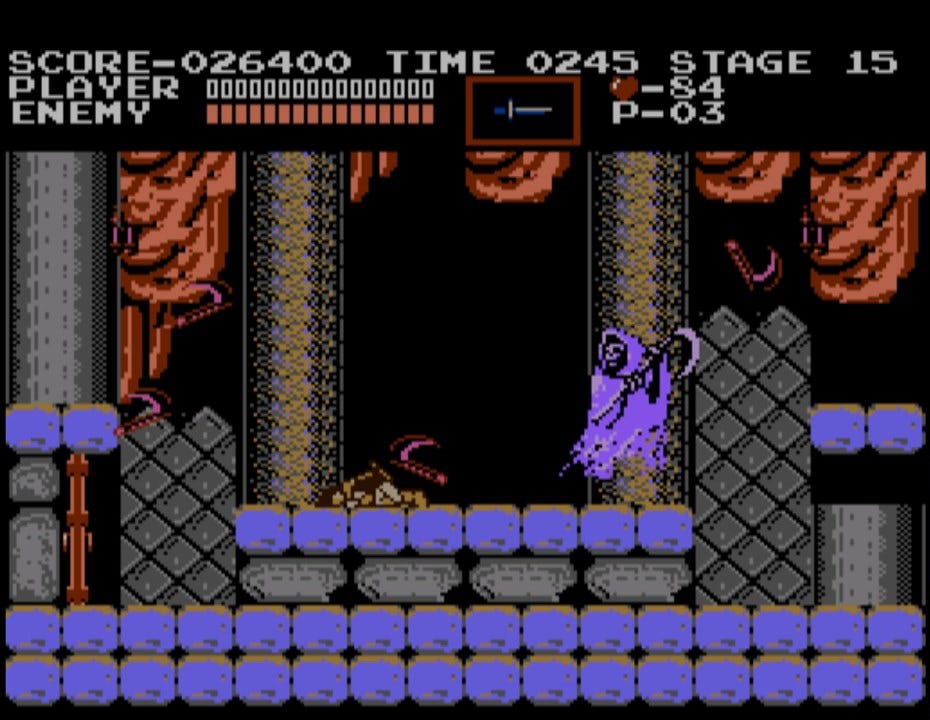
Many horror video game fans will remember playing the Japanese classic Castlevania growing up. The game’s absorbing and user-friendly gameplay, coupled with the countless appearances from the genre’s favourite beasts, from the dreaded Grim Reaper to the intimidating Frankenstein’s Monster, are all that make Castlevania a must-play 38 years later. However, while praise is certainly owed to the game’s ‘monsterific’ charm and nostalgia-ridden interface, the most worthy factor of applause is how Castlevania became a benchmark from which future horror games derived. The game did not invent the Metroidvania platform where users can roam an expansive, connected map, but it did aid in the popularisation of these iconic mechanics. Castlevania’s seemingly endless land to traverse in the game creates many instances for battles to ensue and a barrel of horror fun to emerge.
Alone in the Dark (1992)
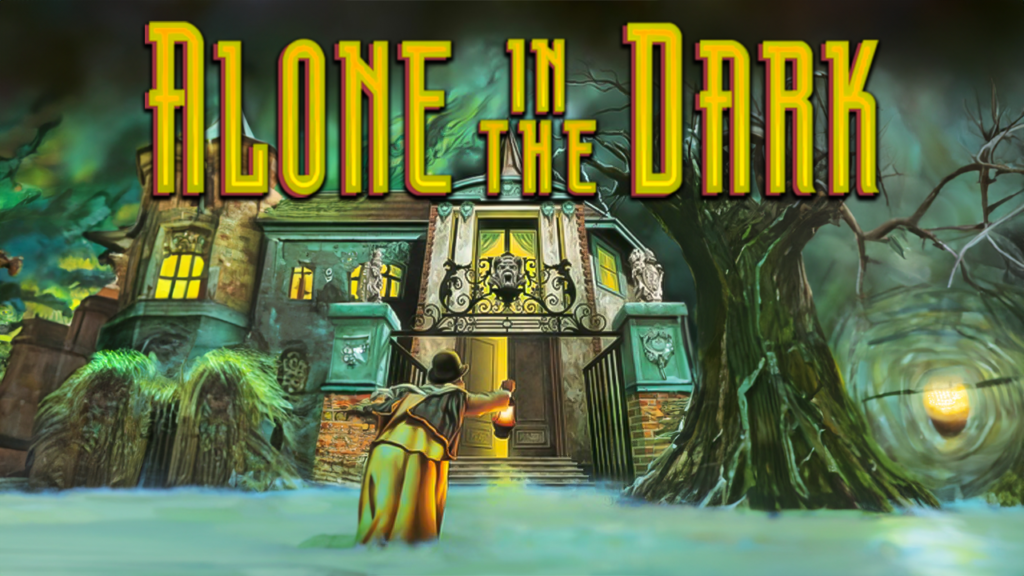
The 1920s Louisiana setting sees the player trapped in a haunted mansion where supernatural forces run amock. To proceed to the next level, the user must complete an array of puzzles and tasks while evading the wrath of the sinister ghouls. Alone in the Dark took inspiration from the likes of horror auteurs such as the zombie king Goerge Romero and giallo champion Dario Argento. What was quite unique at the time for the game was how the creators used a fixed-camera setup where the 3D character’s actions and events would shine against the 2D backdrop. This mechanical creativity, alongside the dramatic music and ambience, earned the film immediate applause from critics and players alike, with the game even going on to be lauded as the very first 3D survival game in the horror subset.
Zombies Ate My Neighbours (1993)
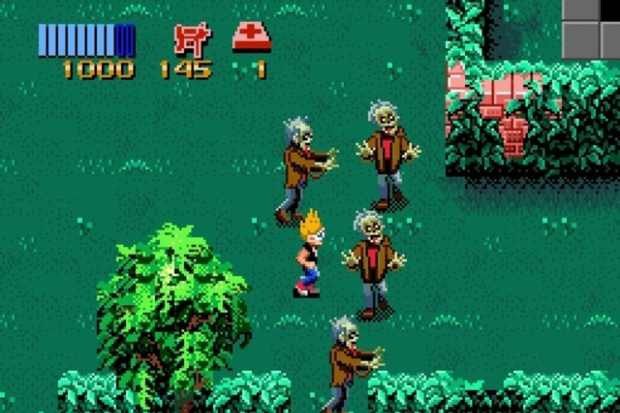
Zombies Ate My Neighbours delivers on its promises of being precisely what the title indicates, with the plot following two friends, Zeke and Julie, who must rescue their neighbours from hungry monsters created by the evil scientist, Dr. Tongue. The humourous game was not necessarily winning any prizes upon its lukewarm release, but over the years, Zombies Ate My Neighbours has rightly become a bonafide cult classic. The two-player mode, coupled with the archetypal 1990s graphics, continuous references to beloved horror movies and comedic outlook, has made the game a staple.
Phantasmagoria (1995)
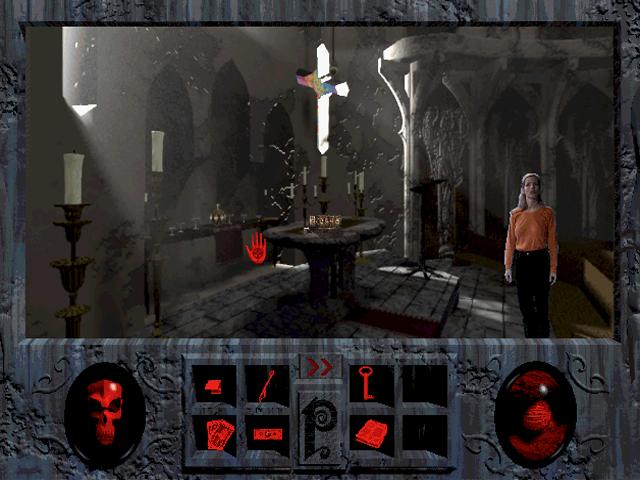
Phantasmagoria is a classic adventure horror that features a point-and-click mode of playing that follows the story of a writer who, after moving into an isolated mansion, encounters supernatural forces hellbent on terrorising her. At the time of the game’s release, interactive movie games were all the rage, where live-action characters, footage, and cinema-like sequences were featured throughout the gameplay. Phantasmagoria took inspiration from these features and made a game that can only be described as an interactive horror movie. Particularly for the time, the content was theatrical and screen-worthy, with the game’s script even consisting of over 500 pages. Most of these spectacles were heavy on both violence and sexual content, which garnered praise from audiences who admired the boldness of the game and equal dismay from censors, with some retailers refusing to sell the game due to the graphic content. Despite the hurrah, the game proved successful, grossing over $12 million within its first weekend.
House of the Dead (1996)
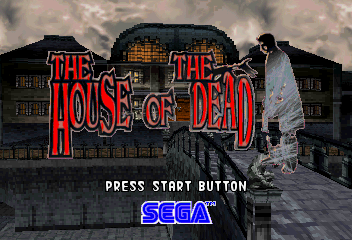
The iconic House of the Dead game series first appeared as a light gun-shooter arcade game, which has since gone on to become an entire franchise, equipped with a cinema-adapted trilogy (which is rather notoriously bashed upon). The late 1990s arcade game chronicles the player defeating a horde of zombies made undead by a mad scientist. Much of the initial acclaim derived from the game’s hyper-stylised graphics enriched with over-the-top verve – indicative of arcade-like flamboyance. Ironically, the devil-may-care merryness of the now harmless appearing graphics saw the game being taken to court by the city of Indianapolis in a bid to ban all and any violent video games, citing that House of the Dead was one of the worst of its kind. Retrospectively, the game is now championed for its cultural impact in booming the zombie subgenre at the turn of the millennium, particularly within the popularisation of fast-moving zombies that the game so frequently used.
Out of this World: Sci-fi Explorations
Doom 3 (2004)

Doom 3 acts not as a sequel in the Doom video game series but instead as its own reboot that strays away from its two predecessors, with the third entry forgoing the prior lack of storylines and opting for a more ample synopsis that would eventually go on to determine the game’s impressive acclaim. As such, the premise is more detailed, following a space marine who acts as the force preventing extraterrestrial creatures from entering Earth. The extensive backdrop also furthers the game’s overall presentation, particularly considering that the designers have more richness to play with.
Dead Space (2008)

The premise of a spaceship becoming overrun by undead creatures chillingly known as Necromorphs gathers sufficient spine shivers on its own, let alone the game’s riveting ability to harness the player and figuratively pull them right into the deadly action. In developing Dead Space, the creators took slight inspiration from the likes of System Shock (1994) and its sequel (1999), along with the ever-influential Resident Evil 4 (2005). Despite these games being entirely meritable, Dead Space wanted to abandon the typical run-and-shoot tactics that habitually take the player ‘out of the game.’ The result of this is a third-person perspective game that is genuinely effective and easily provocative of a taut tension that is hard to beat.
Alien: Isolation (2014)
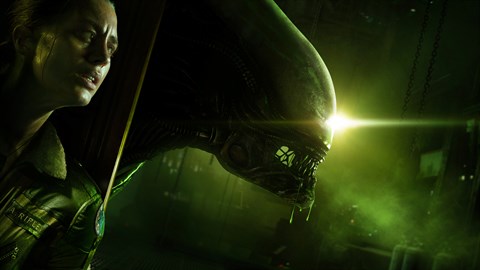
Unlike many entries on this list of games that have since been adapted after their success, as the title suggests, Alien: Isolation did things differently. It is based and set 15 years after the 1979 Ridley Scott film Alien, following Ellen Ripley’s engineer daughter who boards the space station to investigate her mother’s disappearance. The gameplay allows for many abilities and tasks, with the first-person character being able to hide in abandoned lockers, duck under spaces, vent crawl, run ladders and break the line of sight. The freedom of movement remains a big attraction to the game, with the flexibility forcing a heavy immersive intensity where the mystery of the mission and the enemies’ threatening portrayal make for a game that will have the player fixated on the screen for hours upon end.
Fighting the Hordes: Zombies and Viruses
Resident Evil 4 (2005)
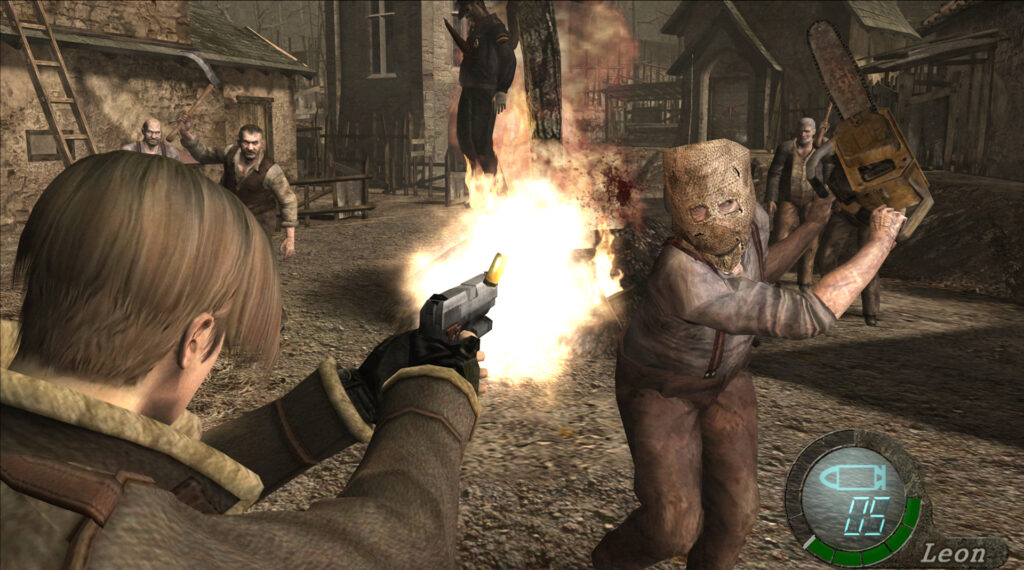
In Resident Evil, its fourth output is universally praised as one of the franchise’s best. Maybe it’s the sinister cast of morbid creatures that spring to life throughout the game or the intense gameplay coupled with the fleshed-out characters that make this survival horror game a standout feat. Either way, acclaim is abundant throughout this rip-roaring, frenzied play that showcases a detailed-oriented approach to its camera system, which namely popularised the over-the-shoulder angle that so many players are accustomed to now. It was an interesting take on the land within the game, the player essentially has the ability to immersive themselves into the action akin to the first person shooter view, but additionally have an almost gods view perspective on the action.
Left 4 Dead (2008)
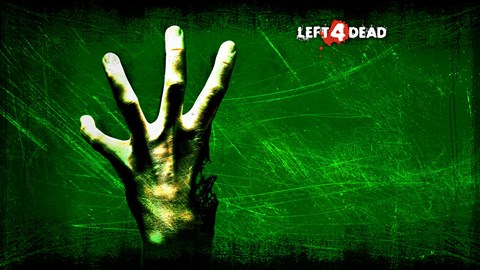
On the surface level, this fierce zombie thriller may appear as yet another zombie riot to join the extremely packed subgenre, but as any player will inform, Left 4 Dead is a powerful, consuming voyage into the horrors of the undead, with the game’s zombies having devastatingly horrific traits that will get hearts racing in no time as you fight for survival. Left 4 Dead truly comes to life when the multiplayer system is utilised. The four-game mode offers a single-player mode, with the other characters being controlled via AI bots, and whilst this play does still elicit a spirited exercise, the game thrives when the four-player mode is enacted, and cooperative gameplay ensues. As a result of the multiplayer mechanics, Left 4 Dead is a classic social game that demands the thrills that come with interactive group sessions.
The Last of Us (2013)
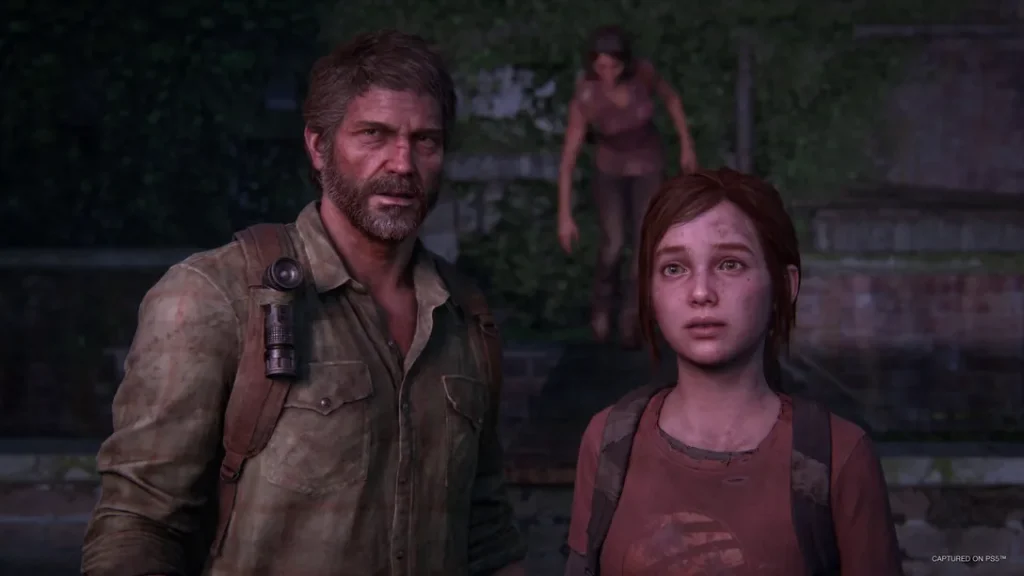
In the scheme of video game adaptions, it is rare to find one that is as universally beloved by seemingly everyone, horror fans or not, video game enthusiasts and ones who have never touched a console. However, whilst prestige is owed to the 2023 TV series, the original source material is even more impressive and epic. Emotionally driven and melancholic in tone is this action-adventure game that follows the remaining survivors after a fungus-fuelled virus has spread amongst the U.S., leaving the landscape barren except for the god-awful mutated creatures and the last of humanity. With its stunning visuals and intense gaming choreography, what truly propels The Last of Us is the strikingly fruitful character development where relationships and bonds are paid detailed attention, creating a meaningful and engaging experience for the player.
SURVIVAL of the Fittest
Condemned Criminal Origins (2005)

This survival, first-person horror game takes a more grounded approach to its plot, focusing on the terror within reality as we follow a detective on the hunt for a serial killer. Whilst the game does slightly tiptoe into the supernatural realm, its nucleus remains fixated on graphic, visceral violence that is true to its real-world aesthetic. The design and theming are noted to be replicative of psychological thrillers including Se7en (1995) and The Silence of the Lambs (1991). As such, the atmosphere is a key component in the game’s success, with the dramatic, stylised aura pairing nicely with the brutally violent hand-to-hand combat that features throughout.
Amnesia: The Dark Descent (2010)
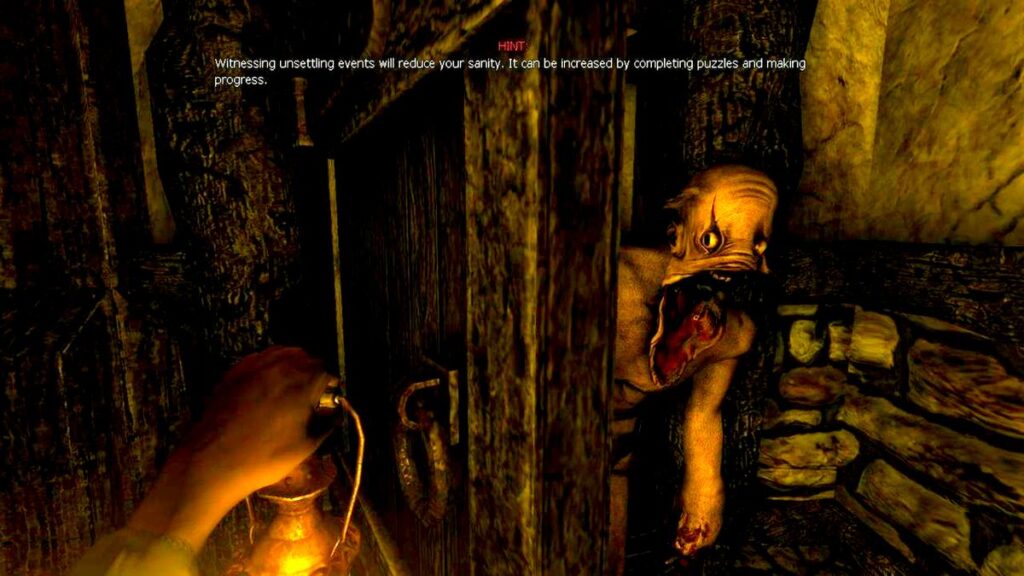
Amnesia: The Dark Descent has only grown in popularity since its release nearly fifteen years ago, with the game’s focus on horrors that lie in the pitch dark, stirring waves of psychological threats. The looming presence of gruesome monsters that lie in the wake is emphasized by the game’s keenness not continuously to show the enemies’ appearance; alternatively, the frights are brought forward by the knowing that these creatures are waiting – it is certainly a situation that will leave you in trepidation. The gameplay itself furthers the vigour of the horror as the lead character, Daniel, is unable to fight off the monsters upon contact, instead he can only escape if they are unable to see him. The sense of hopelessness and unease combined with the dark graphics and aura makes The Dark Descent an unmissable experience.
Darkwood (2014)
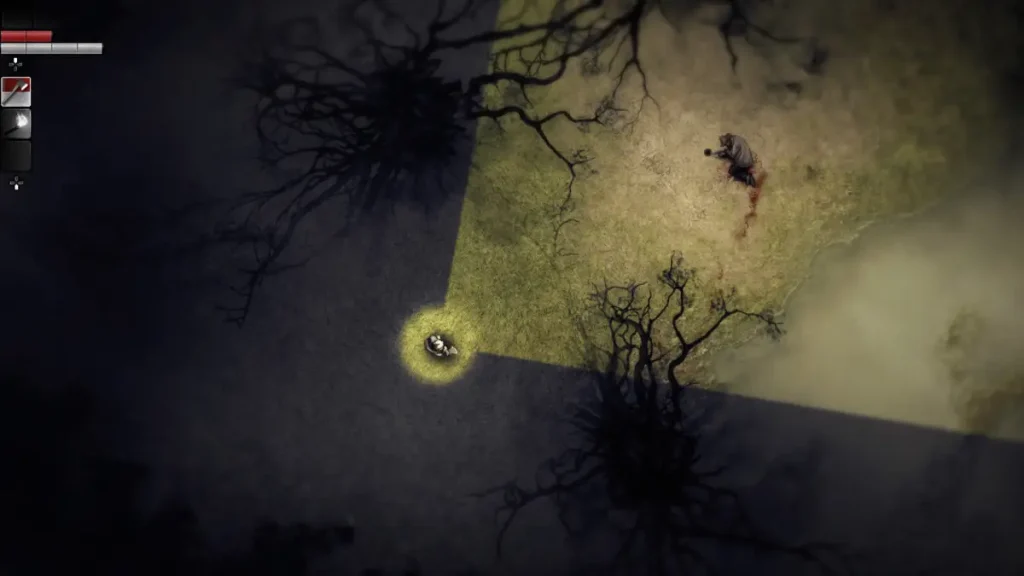
Darkwood may initially present itself as a run-of-the-mill survival game, taking place in an eerie Polish forest where the player must make their way out of the turmoil. However, the pulsing terror does not derive from continuous jumpscares which has become somewhat typical of the subgenre, but instead, the looming sense of nihilistic dread is stirred purely by the uneasy atmosphere and threat of the utterly barbaric creatures that appear throughout. Joining the macabre vibes is the detailed gameplay that revolves around a plethora of side quests and missions that add bountiful depth to the mystifying game.
The Evil Within (2014)
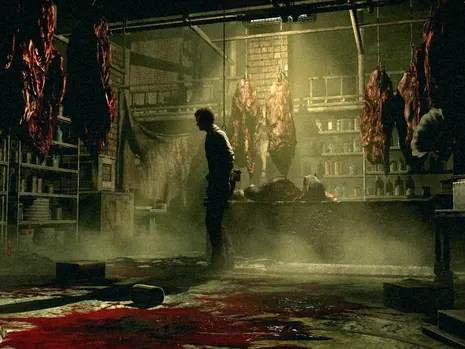
Shinji Mikami, the creator of the infamous Resident Evil game began to notice that contemporary survival games no longer scratched the itch of intense battles to escape and survive, instead, Mikami noticed a strong uptake in these games becoming solely action-horrors despite the survival genre label. In a bid to re-transform the scene again, just as he did years prior, he created The Evil Within, a nail-bitingly creepy game centring on secret organisations and the desperate bid to survive such calamity. The fruitful combat scernaios, heaped with the eerie environment propel The Evil Within to be a standout game of the early 2010’s, with the frenzied, gory displays of terror making for an adrenline-filled ride from start to finish. The sheer chaoticness of the enemies and the thoroughly rich plot pump freshness into the survival element of the game, ensuring that each spine-chilling second spent playing is brimming with excitement, nerves and a great deal of fear.
The Quarry (2022)

The fairly recently released The Quarry was almost inescapable for many upon its arrival. Positive reviews were peppered across forums, advertisements were unavoidable, and sales exceeded expectations, which is unsurprising considering the game’s meta-like qualities, brilliantly executed character development and overall aesthetic and atmosphere that hails to many horror fans’ nostalgic acclaim to summer camp nightmares. The plot follows a group of counsellors at Hackett’s Quarry Camp spending their final night at the site. However, any chance of merriment is cut short after supernatural creatures, alongside vicious locals, make their presence known. The game’s interactivity means that all the playable characters can either die or survive, with their life depending on the players’ decisions, creating a multifaceted sense of immersion that raises the stakes. The game’s intense thematics speak to its spiritual predecessor, Until Dawn (2015), with the gameplay and plot exploring that same sense of malicious cruelty and infamous cabin, woodsy setting.
Unleash Your Dark Side: Reverse Horror Games
Carrion (2020)
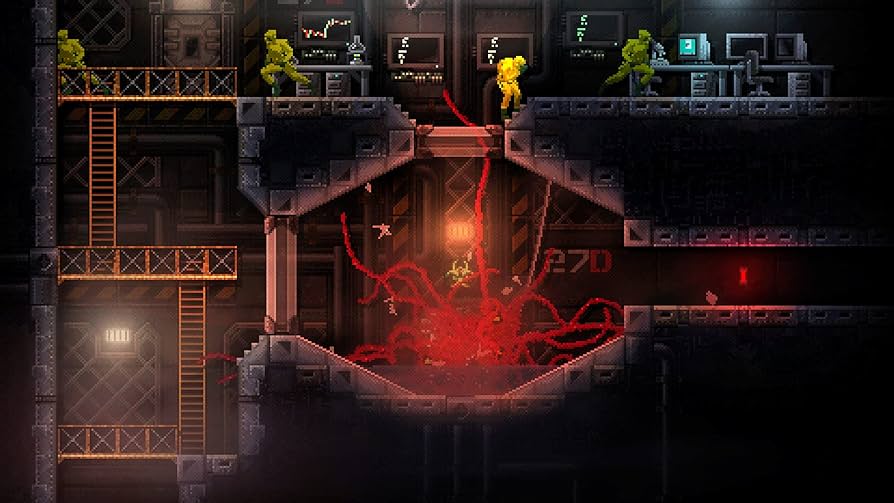
Carrion belongs to the intricate reign of reverse horror games, which in this case leads the player to take on the role of a tentacled creature travelling through a research facility killing everyone in sight. Carrion is comparable to that of a maze where the game’s map shows a series of twisted and intertwined areas that the player can only access once they have completed a series of tasks. The aesthetics made up of pixel art and the creature’s gnarly design is reminiscent of nostalgia-driven video games of the late 1990s and early 2000s, it is simple and effective, and from a contemporary perspective, it is a refreshing change that allows the player to set aside how hyper-realistic and sensical the game could be and just simply play and enjoy.
Dead by Daylight (2016)
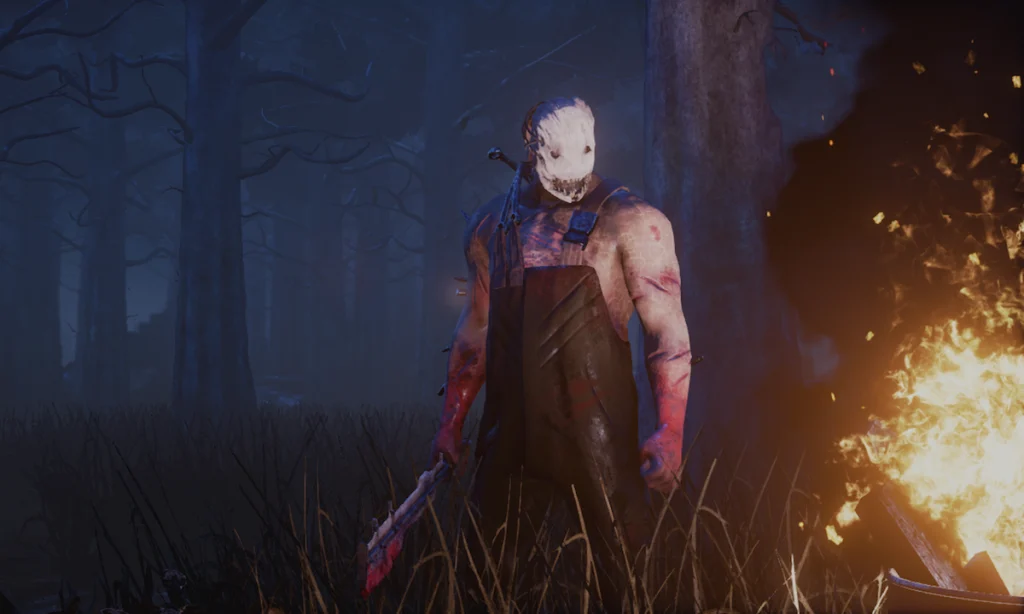
Dead by Daylight is a feast for any horror fan, with the game allowing the chance for players to be either the killer or the victim. This measure of hunter and prey creates a dynamic that allows for the slasher-like plot to entwine itself within the diegesis of the game, with the outcome being equivalent to that of the ‘ultimate slasher’. The story follows a team of survivors who must persist in fighting against a mysterious killer whose goal is to sacrificially impale its victims on hooks to please a macabre presence otherwise known as The Entity. The gameplay teases all by creating ruses where the killer’s and victims’ information both allow for advantages. Whilst the killer has natural power within its antagonism and ability to know where the group’s missions are located and so forth, what the victims have is the ability to switch from third-person to first-person views, creating an all-encompassing perspective where every angle is at the player’s command.
Sea Salt (2019)

Sea Salt is an independent reverse horror game that lives and breathes Lovecraftian aesthetics, with the story set in the late 19th Century in a small seaside village. The players take on the role of Dagon’s army, a sinister god of the ocean who is worshipped by the town as they provide regular sacrifices. However, when the sacrifice runs short, Dagon decides to invade and massacre the village. It is a misconception that all reverse horror games innately create an environment where the victims easily bow to the player’s antagonistic force; Sea Salt demonstrates that this is quite the opposite, with the villagers teaming up to create swarms, wielding weapons and creating massive retaliations that the player can find themselves struggling to defeat. The intense and challenging gameplay is joined by the game’s gloomy appearance that matches the overcast Victorian-esque seaside town.
Screen to Scream: Horror Games from the Movies
Halloween (1983)

Halloween, seemingly many fans favourite autumnal slasher, perked the interest of Games of Apollo employees in the midst of the great video game crash of 1983. The hide and seek device within the 1978 John Carpenter film was a large inspiration for the creators, with the game following a babysitter escaping the presence of an unnamed killer. Whilst the game was titled Halloween, with the poster featuring a large pumpkin (the exact same design used in the film’s poster), along with Carpenter’s titular theme song appearing throughout, the game never indicates that the characters are that of Laurie Strode and Michael Myers. Although the game has fared well over the years, primarily due to the nostalgia, fan-driven culture surrounding Halloween, at the time of its release, the game aided in Wizard Video Games filing for bankruptcy due to the sales. In fact, in the midst of liquidation, the company sold copies of the game with minimal effort, not even labelling the case, instead the edge was simply lined with a white sticker with the word ‘Halloween’ sloppily hand-written on it.
The Texas Chainsaw Massacre (2023)
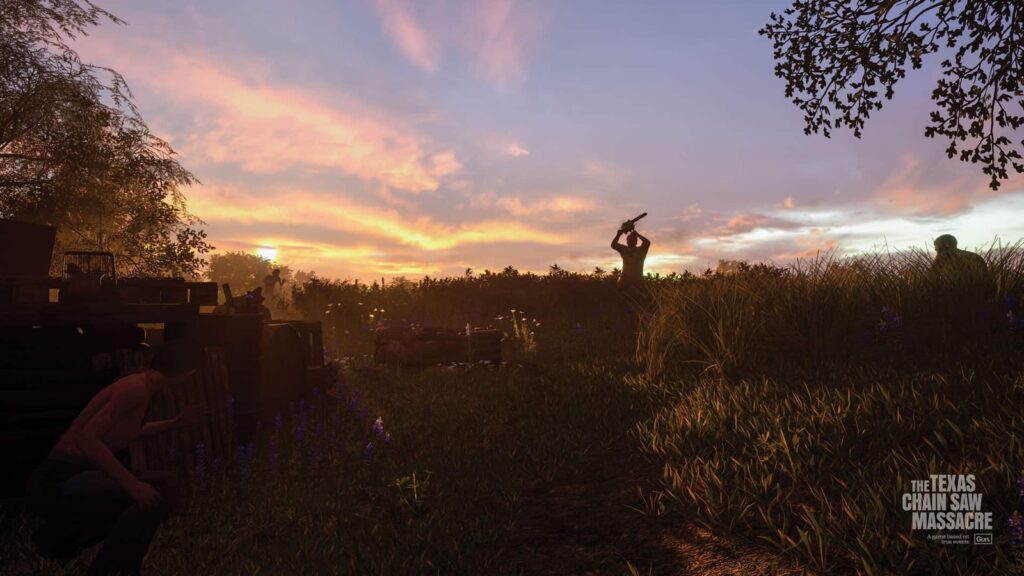
The Tobe Hooper 1974 classic The Texas Chainsaw Massacre is no stranger to the world of video games, with the first being developed into gaming format in 1983 for the Atari 2600. Forty years after the fact came the revived 2023 asymmetrical-based game which sees a group of 7 victims who must escape the deadly cannibalistic family. The atmosphere, music and pacing, challenges, maps and much more are all a testament to the barrage of amusement this game delivers. It may not be a chilling expedition akin to the paranormal antics seen in other games, yet what Texas Chainsaw does yield is a vibrant, bloodied immersive experience that will keep you hooked for hours as you battle with the unique characters and fight for survival. That specific combination of fear and excitement colluding throughout the various cat-and-mouse situations is amplified by the horror star power behind the characters. Kane Hodder, who played Jason in four of the Friday the 13th films (as well as acting as a stunt coordinator for Texas Chainsaw Massacre III [1993]), stars as Leatherface. Hodder’s expertise in playing formidable forces elevates this intimidating motion capture experience.
Friday the 13th (2017)

Yet another asymmetrical horror game is the ‘slasherific’ Friday the 13th which aids in lingering, expanding and exploring the maddening lore of Jason Vorhees and his brutal killing sprees. The game is built on a semi-open world chassis, where players can investigate the intricate design found within the crevices of Camp Crystal Lake. The game was seemingly made with the interest of fans of the franchise in mind, with the in-game virtual cabin offering a plethora of trivia that peaks into the land of an array of Friday the 13th films. Some of this fandom-orientated trivia includes Pamela Vorhees tapes and Tommy Jarvis tapes – both of whom are some of the franchise’s most acclaimed characters. However, all of the success was short-lived as the game’s servers were closed down in late 2020 due to licensing issues, leaving the game only available online through a peer-to-peer network. Once again, the game was officially delisted late last year, but the game’s creators have endlessly teased future creations.
Evil Dead: The Game (2022)
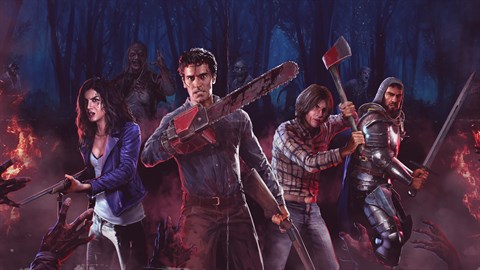
As with key players in the horror movie landscape, The Evil Dead is familiar with the virtual world, with the 2022 game being the latest in a lineup of 10 games adapted from the lore of Necronomicon. The game primarily succeeds through its callbacks to the iconic world of Ash and the gory demons that he can never seem to escape. The game walks the tightrope of being uncomplicated, providing easy, messy fun where ample weaponry and bloody battles are plentiful; whilst also enacting a full-bodied storyline to prevent the game from becoming too elemental. In other words, the game makes use of simplistic, groovy fun that fits in nicely amongst the expansive Evil Dead universe.
Twisted Mind Games: Psychological Mayhem
Silent Hill 2 (2001)

The lore of the Silent Hill spectrum is part of the entire gaming series’ major intrigue. Metamorphic creatures, gangly beasts and gnarly monsters parade their nasty frightfulness throughout the game, making for a play that is not for the faint of heart. Joining the fantastical yet chilling land of Silent Hill is the game’s bizarre and puzzling premise where the horror is akin to a carnival of circus-like madness, all of which is complimented by its disorienting scoring and sound that is reminiscent of disturbed, discordant drones that cling and clang to produce the ultimate unnerving experience. Further propelling Silent Hill’s second entry into gaming stardom is the development of the cinematic aesthetics that made its predecessor successful. The game is brimming with psychologically rich storylines, immense visuals and that whopping grandiose soundtrack that is synonymous with the game.
P.T (2014)
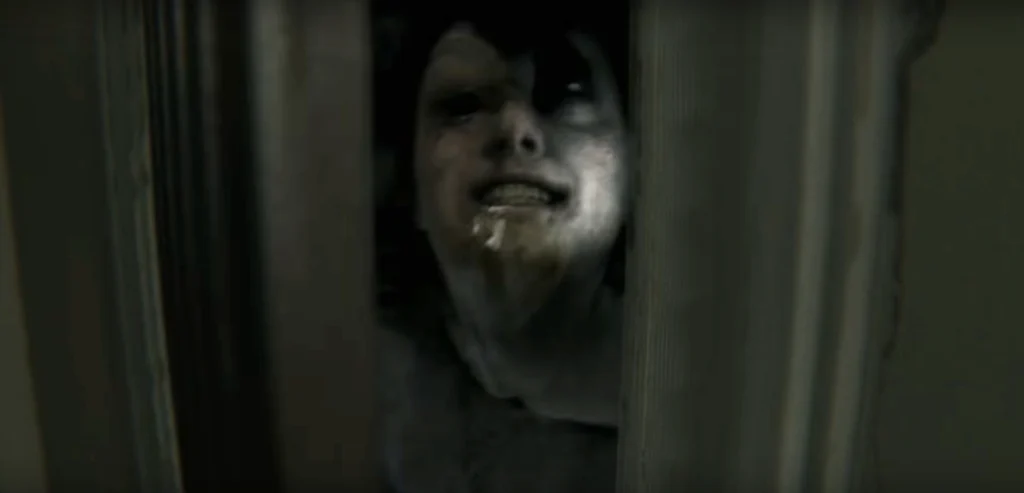
P.T. was developed by none other than gaming auteur Hideo Kojima (Metal Gear [1987]) as part of a collaboration with Guillermo del Toro. P.T. has ties to the Silent Hill series, mainly as the game was developed as a teaser for the now cancelled Silent Hills. However, as Kojima has expressed, P.T. is essentially its own standalone game that does not piggyback off of the Silent Hill franchise. Upon its release P.T. soared the market with unbelievable popularity, it became known as the must-have game, the unmissable experience. The visuals were terrifying, the tension was immaculately built and the plot of a labyrinth-like haunted corridor that the player must escape, all made the game a roaring success. That was until it was deleted from the PlayStation Network less than a year after its release due to the cancellation of Silent Hills. Uproar ensued as P.T. was its own game, leading to various fans remaking the game multiple times, only for it to be taken down shortly after.
Omori (2020)

Omori is an independent, Kickstarter-funded game based upon director Omocat’s webcomic ‘Omoriboy’. The concept is similar to that of role-playing games of Japanese origin, which often focus on strong character development and fleshed-out background stories. The overall plot follows Sunny, a teenage boy, and Omori, his alter ego. Throughout the game, the user delves into Omori’s fantasy world, as well as Sunny’s real world. The theming and tone throughout the gameplay between the two lands deal with darkly dramatic issues including mental trauma and suicidal ideations.
Paranormal Activity
Fatal Frame II: Crimson Butterfly (2003)
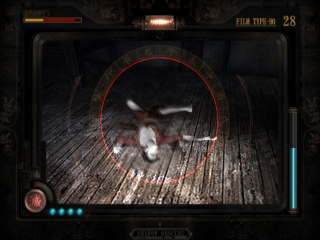
The Fatal Frame series, also known as ‘Project Zero’, is a staple Japanese horror game which has grown quite the fan base, particularly the game’s second feature, Crimson Butterfly. The game mostly toys with the paranormal and all haunting paraphernalia associated with ghostly ghouls, leaving players often aghast due to the game’s genuinely creepy material. The fear factor is amplified by the unique play of the game, with the objective being that the player must use a special camera, think Camera Obscura, leaving the horrifying ghosts to leap out on the screen the minute the shutter button is pressed. Shockings’ and intensity are two rules of the adventure that make for an entertaining and above all, addictive game.
Visage (2020)

Partially inspired by the intricacies of P.T. is Visage, an independent game centred on a strangely laid out house where players must determine the root cause of the paranormal activity. The semi-open world structure of the house allows for a range of puzzles to be solved, which vary from gaining information from the cryptic surroundings to obscure challenges where the player has to immerse themselves right into the daunting action. The non-linear flow of the game makes for plenty of unexpected twists and turns as the player unearths the lore of this strange and confusing house.
MADiSON (2022)

The Argentinian game MADiSON is perfectly simple, it delivers scares by the bucket load, the gameplay is smoothly developed and just the right amount of challenging; the visual and aural aesthetics have that hard to achieve balance is intense, but not too much like a caricature. This melodic approach is what makes MADiSON the ‘Scariest Video Game of All Time’ as declared by Broadband Choices The Science of Scare Project where 200 players were made to play 45 horror video games, whilst connected to a heart rate monitor. On average players of MADiSON had a BPM of 97, peaking at an extortionate 131 BPM!
Shock Frights: Jumpscares
Outlast (2013)

Outlast has gained a reputation over the years as being a terrifyingly graphic and cruel game that will have you playing with the lights on. The game centres on a freelance writer who gets wind that a psychiatric hospital is performing inhumane human experiments – think MK Ultra, leading the journalist into the hellish bowels of the nightmare-inducing wards where all kinds of harrowing beings lie in wait. Outlast exercises a rare feat in horror video games, the lead character – the player, has no special abilities, nor any powers or weaponry that can defeat the utterly soul-shiveringly creepy enemy. Alternatively, the player must solely rely on stealth tactics to avoid a genuinely brutal demise.
Five Nights at Freddy’s (2014)
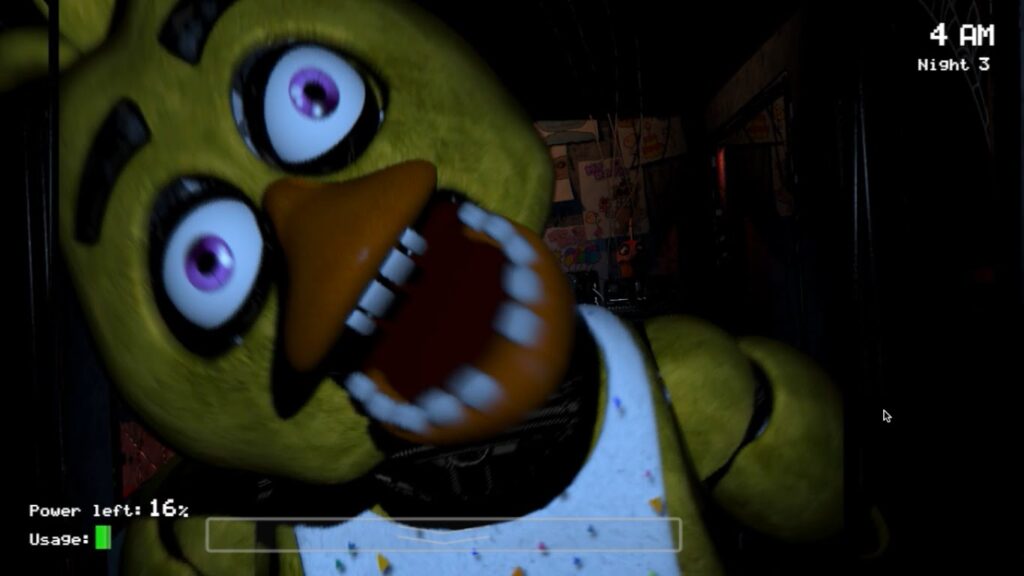
Five Nights at Freddy’s has become one of the most popular staples in horror video game spectre in recent years, with the animatronic-themed chaos interweaving itself into the tapestry of books, comics, films and the culture of cosplay fandoms. Whilst some may argue against this, the game itself is not necessarily nerve-shatteringly scary, it is however an abundance of total fun where the jumpscares and creepy scoring make for quick bursts of entertaining frights. The majority of the games take on the story of a fictional Chuck E. Cheese-style place where night shift employees have to watch over anthropomorphic animatronics that are inhabited by the souls of murdered children. The rather dark background story and impressively creative design of the game make it a must-play.
The Mortuary Assistant (2022)
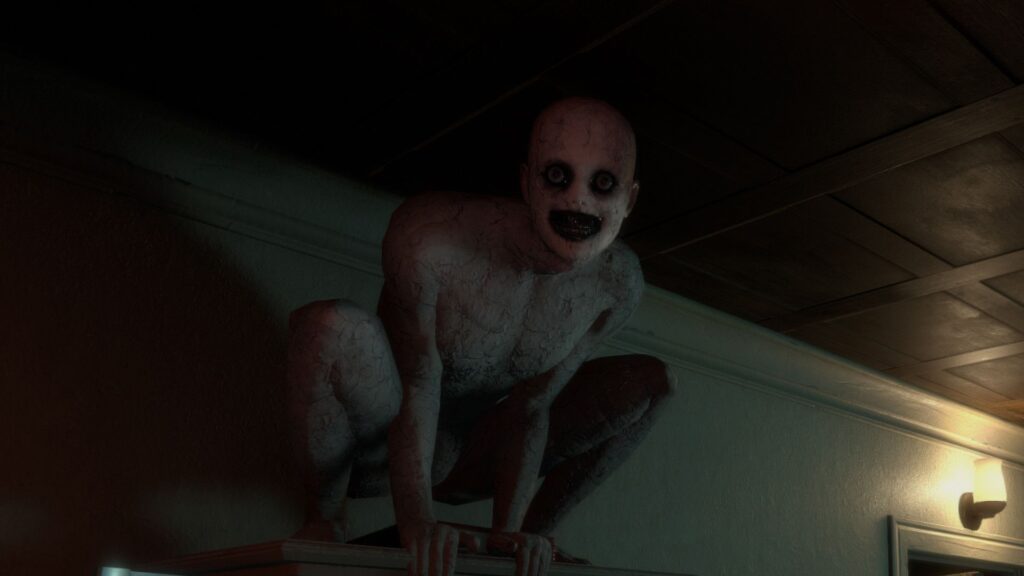
The Mortuary Assistant comes from MMORPG (Massively Multiplayer Online Role-Playing Games) creator Brian Clarke, whose admiration of found footage horror films led to the creation of a prototype of what would go on to become the future hit game. The concept is set in a small town in Connecticut circa 1998 where players take on the role of a beginner mortuary assistant. Initial feedback for the prototype consisted of audiences wanting a more detailed simulation of the embalming side of the plot. Disturbingly but brilliantly, the game evolved to feature hyperrealist embalming procedures which focused on many old-time archaic methods that make for an even gorier game. As if the deathly processes were not enough for the player, the game also implements a staggering amount of effectively executed jump scares that come from the demons that haunt the surgery. Players will encounter countless jumps, boos, and screams as they make their way through the morbid game.
To Be Released
Until Dawn (Late 2024)

It is not uncommon to develop a hand of god feeling whilst playing a game. At the root, it is you who is calling the shots. However, Until Dawn takes this idea and maximises it to its fullest capacity. The game uses a brilliant butterfly effect where each step and decision you make within the game, affects the outcome and consequences, where you can find yourself in a plethora of differentiating webs and conflicts every time you play. Maximising the interactivity of the gameplay is the overall emotional depth that the narrative-driven plot thrives on, with the story breeding a sense of drastic permanency; whilst playing if you were to make a wrong move and one of the characters meet their gory demise, the act is final and the character will remain dead until the game is started over. With all of the game’s excellence, fans were ecstatic to find out that a remaster of the hit game will be released later this year, showcasing even crisper graphics that will enhance the true terror that bleeds throughout.
Ghosts (Release Date: TBC)
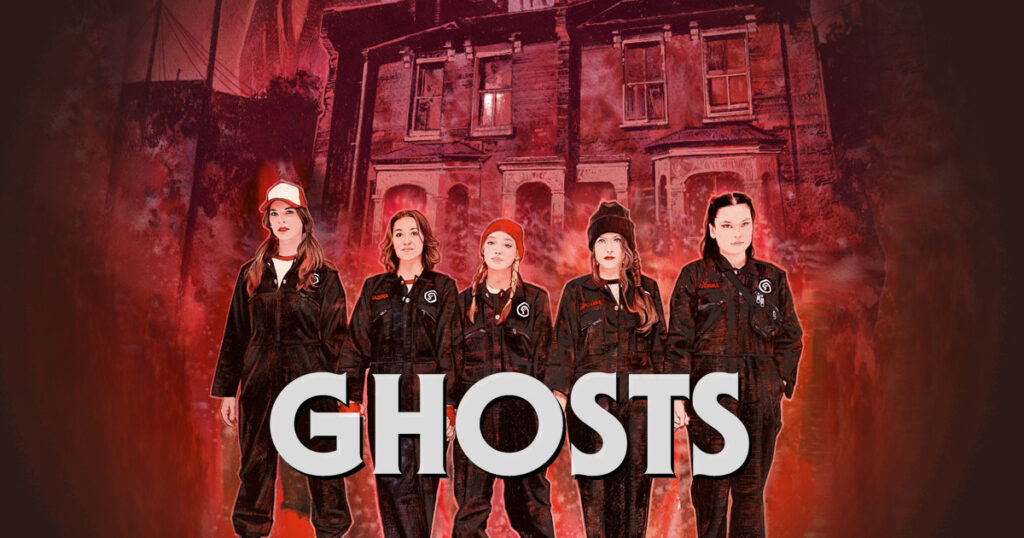
Jed Shepherd, writer, director, producer and now video game creator is known for his phenomenal contributions to horror, with productions such as Host (2020) and Dashcam (2021) lining his credits. Shepherd heralds the upcoming interactive horror video game that is set to be released across Xbox One, PlayStation 4, Microsft Windows and Nintendo Switch; with the big gaming names featuring Ghosts, it can be assured that no one will miss out on this frightful play. The game focuses on a television producer of Ghosts, a live-action ghost-hunting show. The game takes place in real-time, with the job consisting of accommodating the hosts, choosing which footage to include, select the advertisements for the show, all the whilst keeping a lookout for ‘The Long Lady’ – the in-game urban legend whose Medusa-like gaze kills anyone the moment they meet eyes. Along with the unique and exciting plot is the FMV (Full-Motion-Video) stylisation that also comes with an interesting time restriction. The game can only begin at 10 pm local time and if the user were to end the game before the show ends then all the characters will die. Whilst the Kickstart-funded game has not received an official release date as of yet, it’s a sure fact that this live-action, totally distinctive game is not to be missed.
OD (Release Date: TBC)
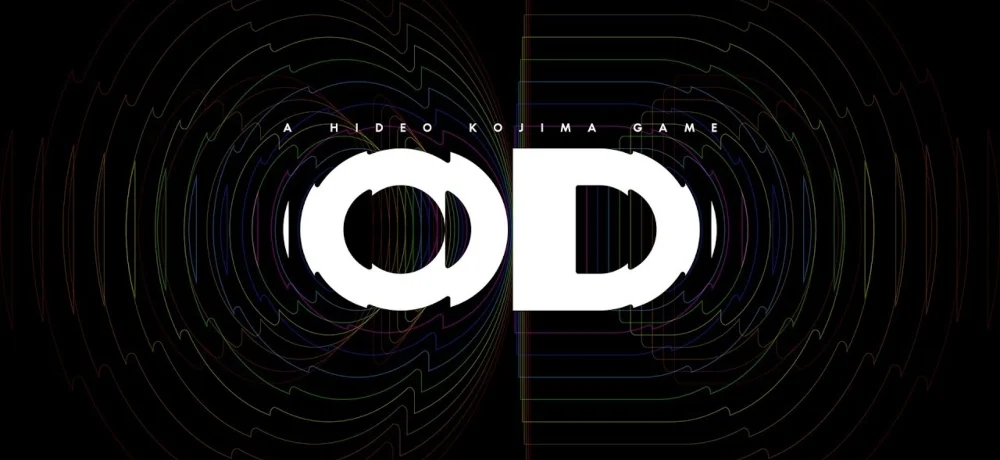
Hunter Schafer (Euphoria), Sophia Lillie (IT: Chapter Two) and Udo Kier (Bladerunner) star in this Hideo Kojima and Jordan Peele written game. The details behind the story have been kept deliberately tightly under wraps, with Kojima only teasing the overarching scenario that revolves around testing fear thresholds and what happens when one overdoses on fear. Unfortunately just under three minutes of the gameplay was leaked which showed a nurse lingering around a darkened hospital with a flashlight followed by a treacherous scream. Whilst still little is known, what has been promised is that this will be no ordinary game, but instead an innovative form of gaming media unlike no other.
Want more top horror lists and reviews? Check out our blog here..

